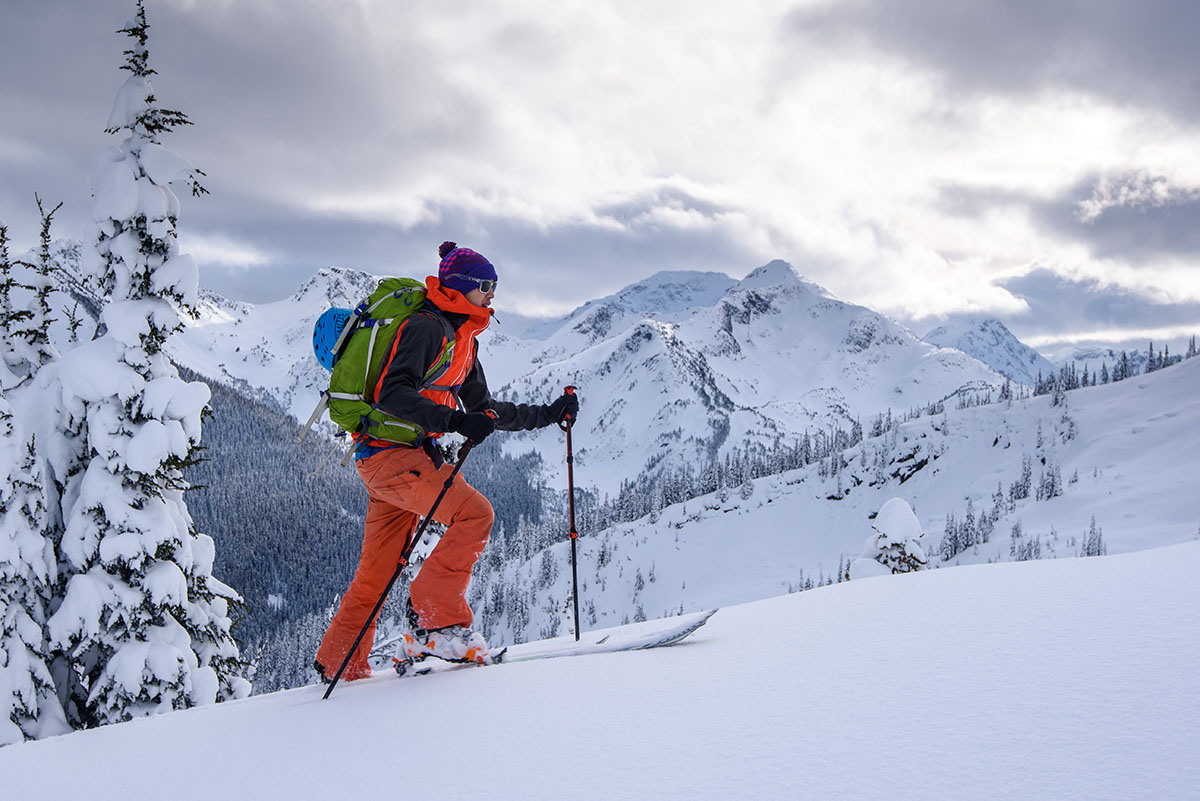
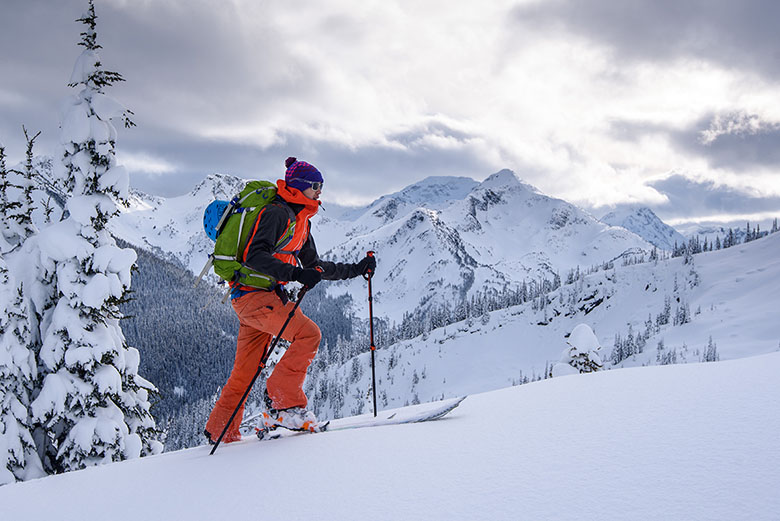
The La Sportiva Storm Fighter 2.0 GTX is a minimalist hardshell jacket made to withstand severe weather on your fast and light missions. With Gore-Tex Active and a tailored fit, we found that it performs best in cold alpine environments but is less impressive in warm and wet conditions. La Sportiva has priced this jacket competitively at $379, offering good value for a lightweight shell. We tested the Storm Fighter 2.0 primarily during backcountry ski missions in British Columbia’s Coast Mountains, and below we cover the jacket’s weight, weather protection, breathability, features, fit and sizing, and more. To see how the Storm Fighter 2.0 stacks up against the competition, see our article on the best hardshell jackets.
My measured weight of the La Sportiva Storm Fighter 2.0 GTX in a men’s small was 11.7 ounces (331g), nearly the same as the 11.78 ounces (334g) listed on their website. I love how lightweight this jacket is, yet it still offers full weather protection and packs down small when not needed. Rolled loosely into the hood, the Storm Fighter jacket is similar in size to a 1-liter Nalgene bottle and noticeably smaller than a competing hardshell like the Arc'teryx Beta AR. The jacket is constructed from a relatively thin 20-denier Gore-Tex Active, and despite the low weight, I have been impressed with the quality of its construction. Only a few loose stitches are visible despite a number of bushy encounters while skiing.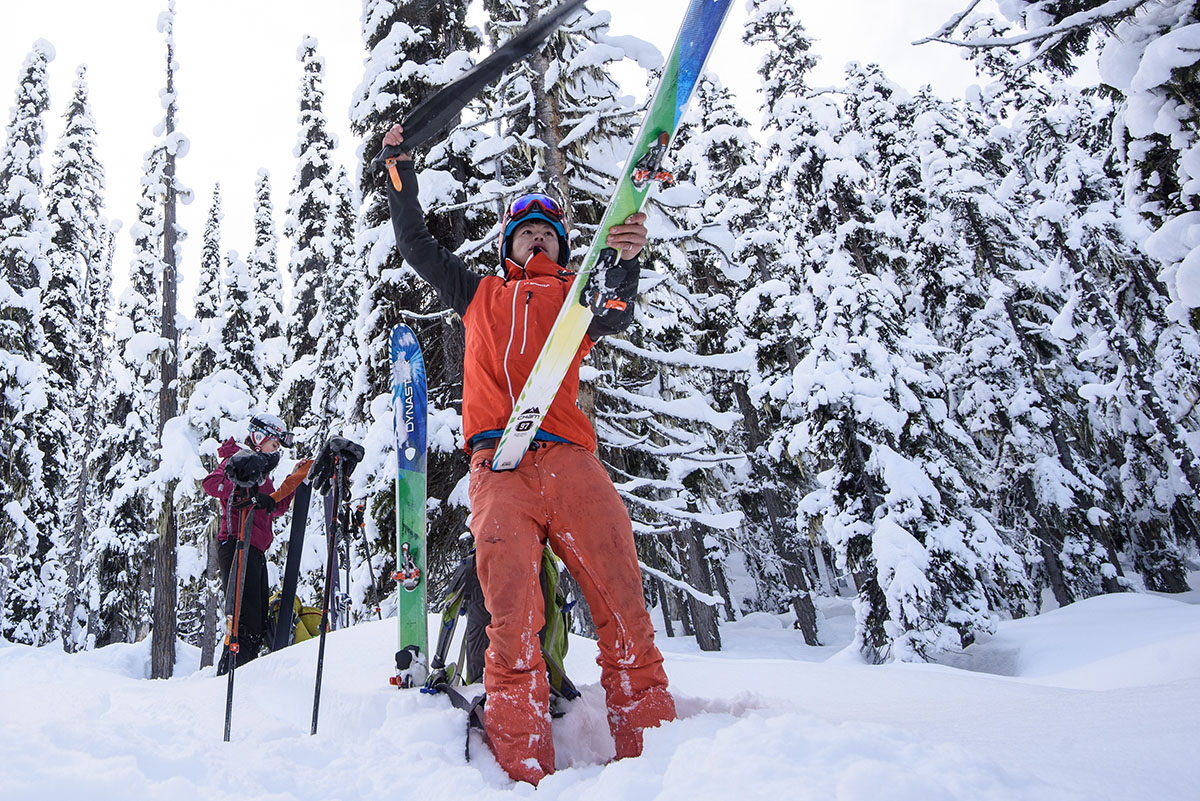
I have been skiing with this jacket for the past three months, using it both for long backcountry missions and resort days. In snowy and windy conditions, the Storm Fighter 2.0 GTX lives up to its name. On a few particularly frigid days I was completely comfortable moving up and down while ski touring. We encountered chilling outflow winds up to 50 miles per hour and temperatures down to 5F (-15C), and I wore the Storm Fighter as a single layer on high output uphills when the temperatures were below 23F (-5C). Taking breaks in exposed locations on windy cols and summits, I felt completely protected from the elements with the Storm Fighter over a fleece jacket. For additional warmth from an insulating jacket, I had to layer it overtop as there is little room underneath given the trim fit.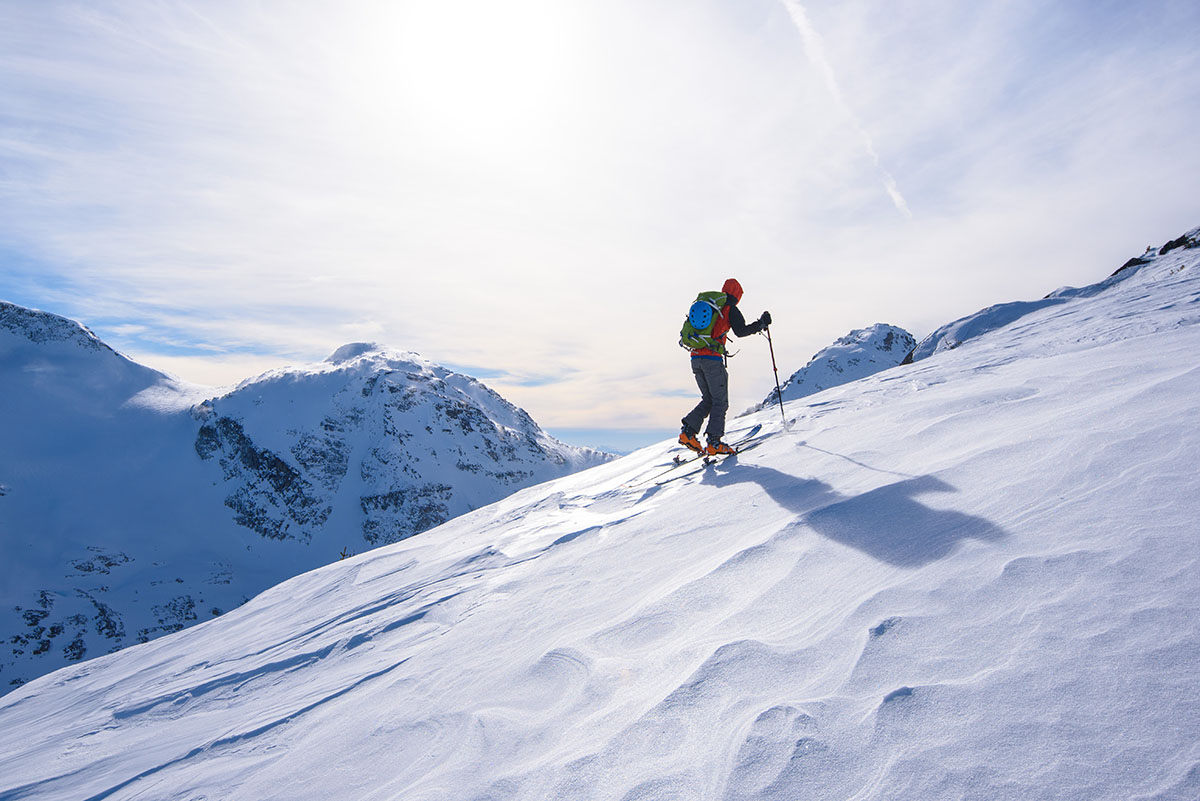
While the face fabric holds up well in a blizzard, it's a different story in warmer conditions. I noticed that the DWR coating was less water repellent than I expected. In all areas, including those with less wear from pack straps such as the sleeves, the face fabric tends to wet out quickly in steady rain or wet snow. Instead of beading, raindrops tend to stick to the fabric and form wet spots. While the jacket remains waterproof and kept me dry even in tough conditions, wetting out of the face fabric generally reduces the breathability of the Gore-Tex membrane. While wet snow may be less of a problem elsewhere, it’s a normal occurrence on ski trips in British Columbia’s Coast Mountains.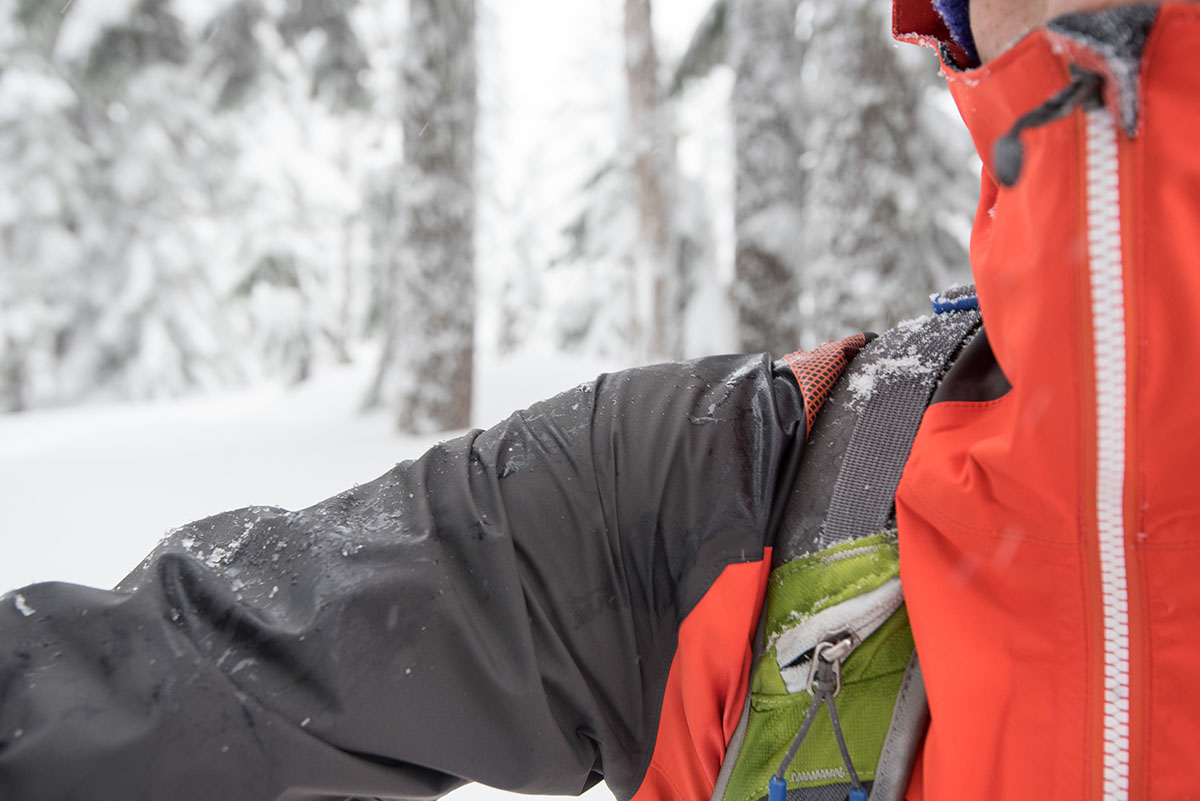
One of the signature features of the La Sportiva Storm Fighter 2.0 is the use of Gore-Tex Active, which is “the most breathable fabric in the Gore-Tex product family.” Despite being more breathable than Gore-Tex Pro in theory, I found that the jacket wears similar to a traditional hardshell like my Arc’teryx Beta AR. I was not able to wear the Storm Fighter 2.0 throughout the day without having some temperature management problems, hence going with a baselayer for the uphills unless it was cold or windy, and then layering the Storm Fighter over a fleece on the way down.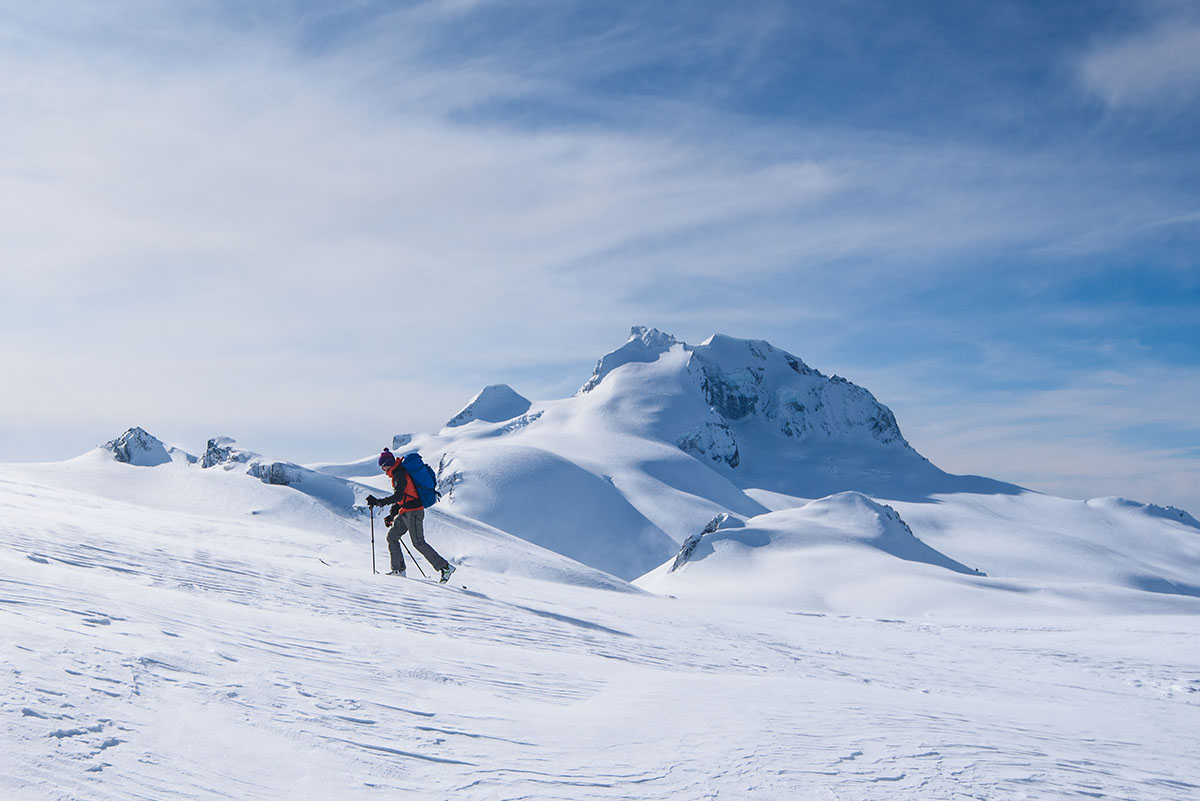
In addition, the weight savings lessen the features that you see on many all-around hardshells. One of the most notable is the lack of pit zips, which give you the ability to quickly dump heat. Regardless of how breathable a hardshell is, I highly prefer pit zips. While skiing in warm and damp conditions, I had a hard time maintaining a comfortable temperature on uphills when I normally go with the pit zips completely open. This definitely is a feature that we would like to see added on future versions of the Storm Fighter—it’s almost a must for serious backcountry ski touring.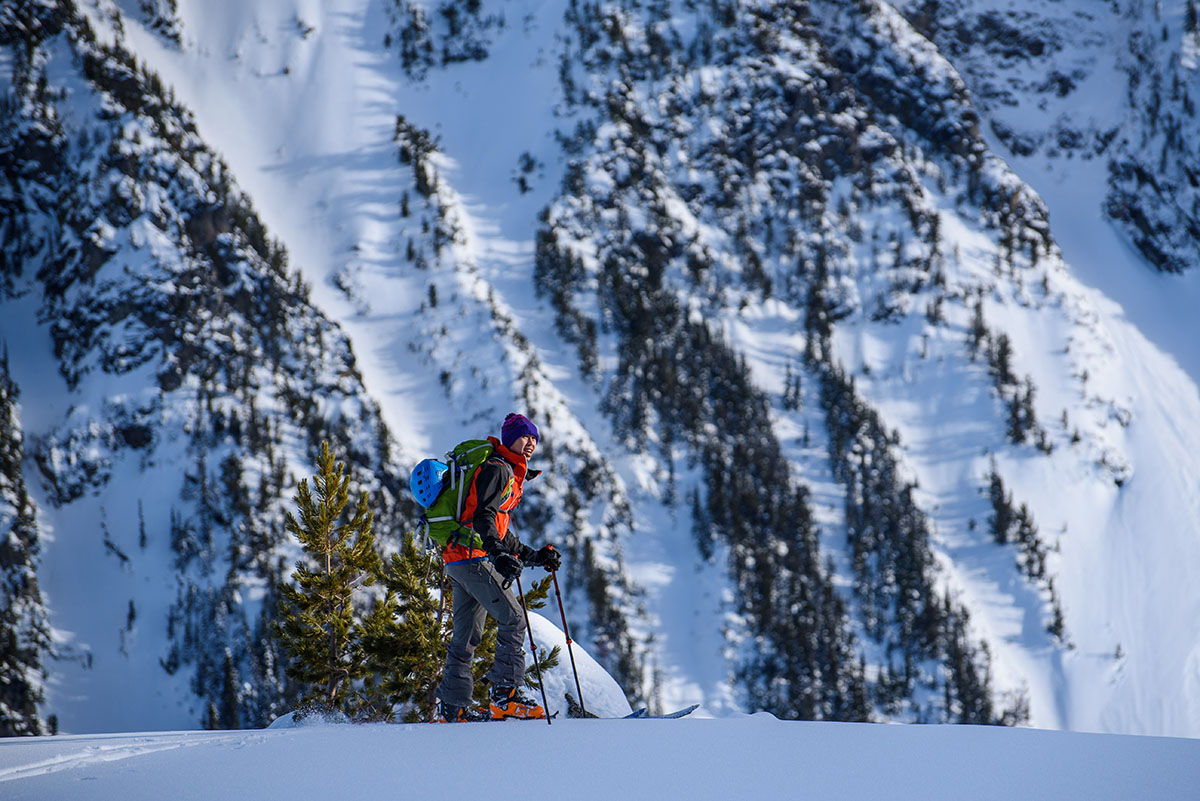
The Storm Fighter has a large, eleven-inch high mesh-backed chest pocket on the left side. In addition to a headphone outlet, I found that it has ample room to fit a phone, map, and bars all at the same time. On the right side, the internal mesh dump pocket is just large enough to fit a pair of ski goggles or skinny skins. When wearing my Beta AR, I often stuff my climbing skins inside the large side pockets to keep them warm when it's really cold out. However, it was difficult to fit my wider climbing skins inside the mesh pocket on the Storm Fighter 2.0. When I rolled them up tight enough to fit one inside the mesh pocket and another on the chest pocket, I found that the extra bulk made the already slim fitting jacket more restrictive.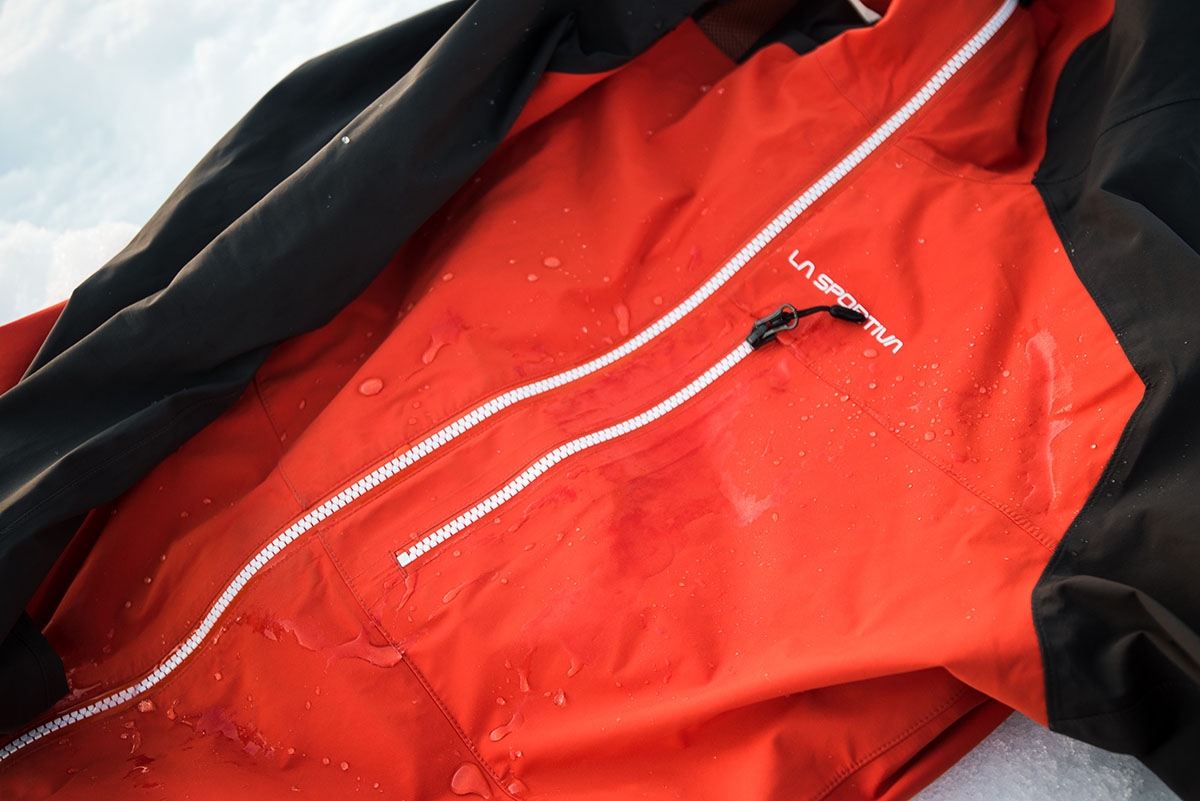
Despite the bomber protection offered by the face fabric, the hood on the Storm Fighter 2.0 was less impressive, and particularly in heavy winds. It only comes with one point of horizontal adjustment: an elastic drawcord to cinch up the back of the head. My experience was that if the adjustment cord was slightly loose, strong gusts of wind would blow the rain brim back and expose my forehead. I prefer a hood that also has vertical drawcords to help cinch it down and keep it close to the neck.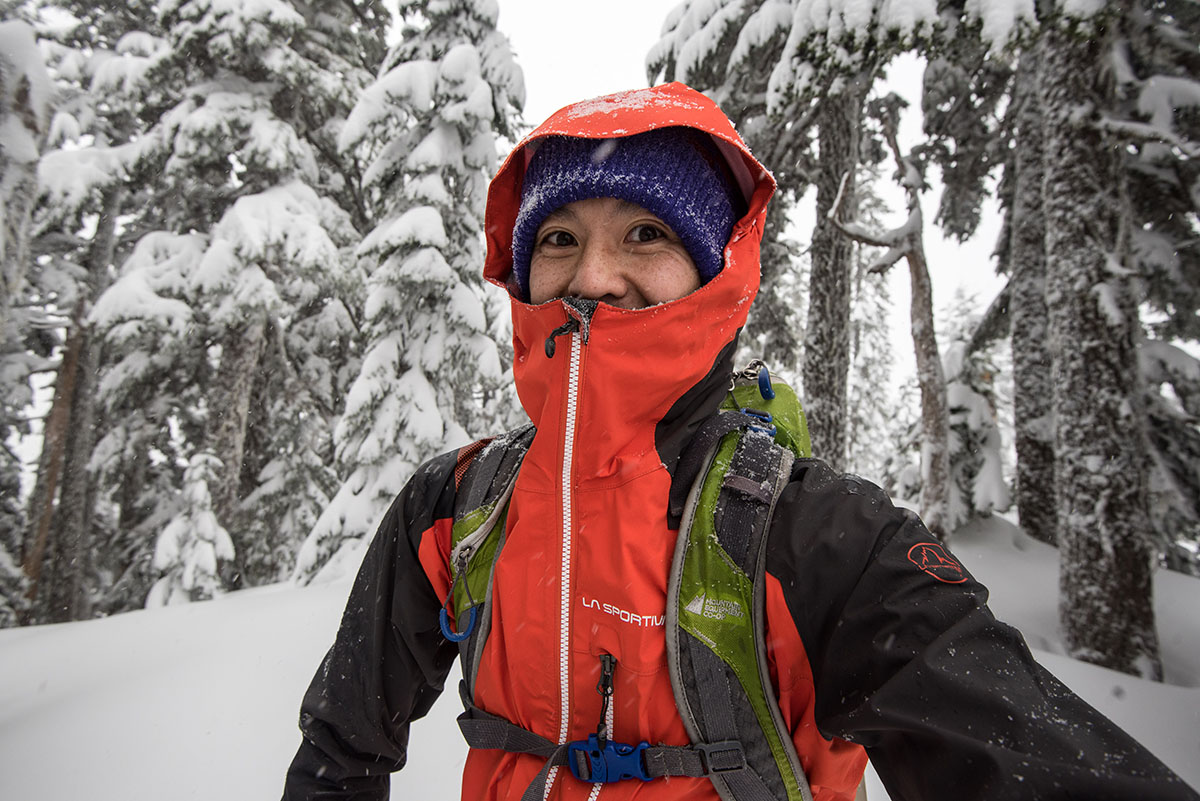
The hood is just large enough to fit a helmet underneath without any restrictions to my peripheral vision. However, it feels like a tight fit with the ski helmet on with limited vertical clearance. When turning my head from side to side, I could feel the pull on the fabric around the neck. The Storm Fighter does offer full protection for the face with a high collar that covers up the nose and extends along the cheekbones. And a soft fleece liner offers comfort for the face when hiding behind the collar in unpleasant conditions.
The Storm Fighter 2.0 GTX is not specifically designed as a ski jacket, despite me primarily testing it in that way. And there are a few missing features that make it less suitable for all-around powder days, and instead a jacket to bring out for long days touring in the mountains when every gram counts. There is no powder skirt to really keep snow out, which can be problematic on deeper snow days when you fall. In addition, the minimalist design lacks velcro enclosures at the cuffs, which I like for keeping the cold out and to help with getting gloves on in damp conditions. The jacket does come with partial elastic cuffs, but my wrists are smaller in diameter than the cuffs, rendering them mostly non-functional.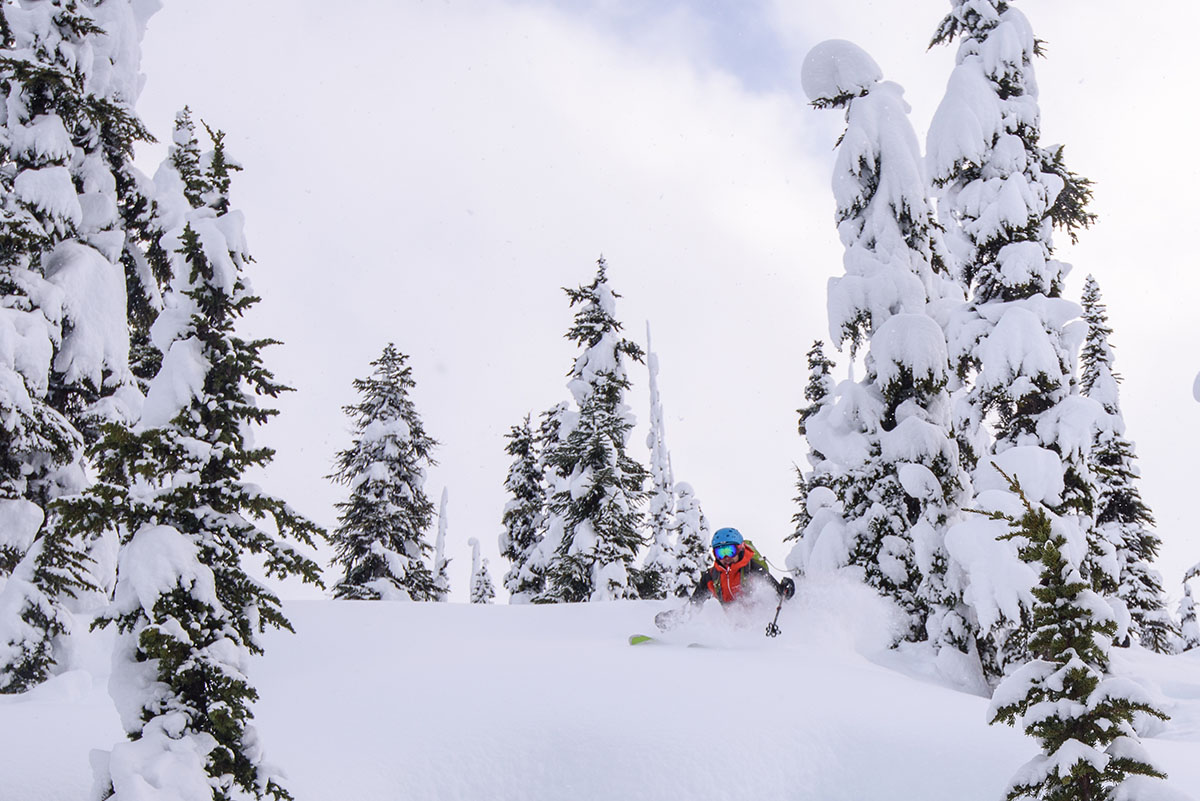
I am 5'9” with a skinny build and a chest width of 38.5”, and went with a size small. The Storm Fighter 2.0 GTX is a form-fitting jacket with a tailored look. In theory, the trim fit keeps the fabric closer to the body, improving breathability. La Sportiva describes it as a comfort fit, but I consider the jacket to have more of a slim fit. In practice, I was only able to comfortably fit a fleece midlayer or thin insulated jacket underneath. The sleeve lengths are just long enough to cover up my wrists, but I found the upper arms are relatively narrow and that the jacket would tighten around my shoulders when lifting my arms high. I rarely noticed this as a problem while ski touring, but climbers reading this should be aware and may want to size up. The jacket sits true at hip length with a drop-tail hem.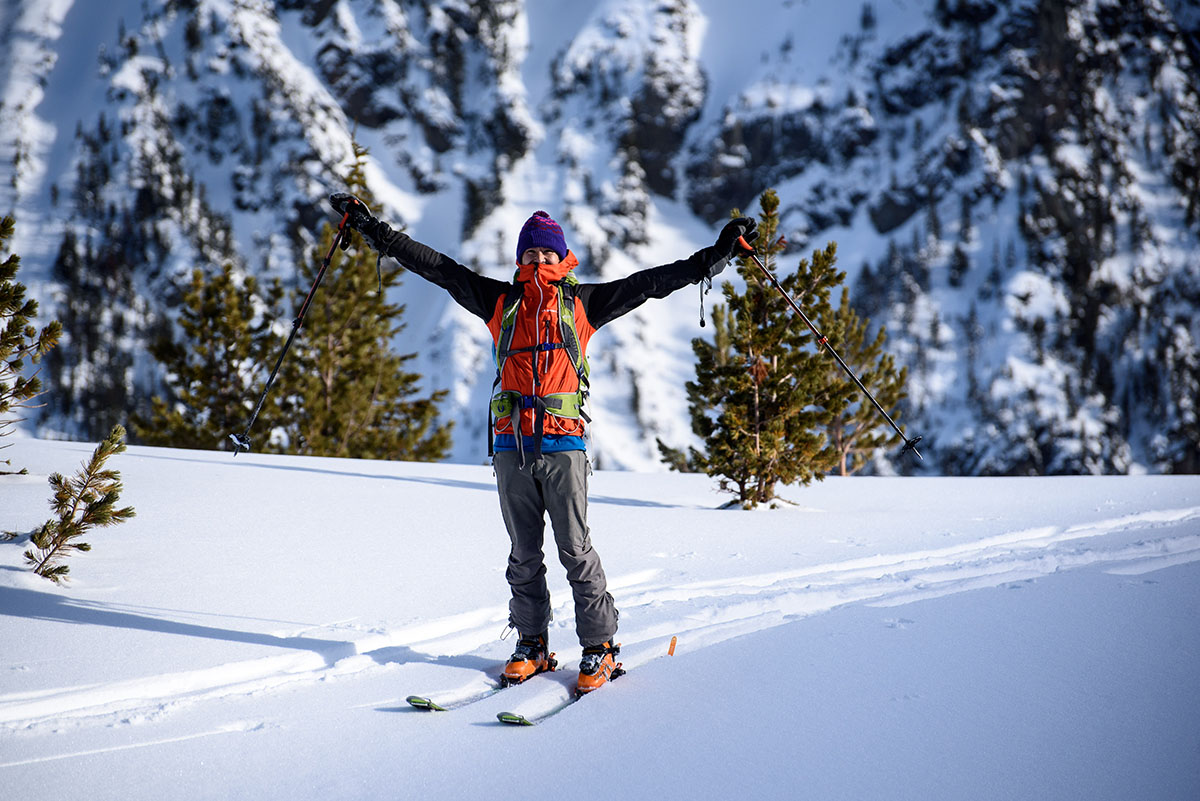
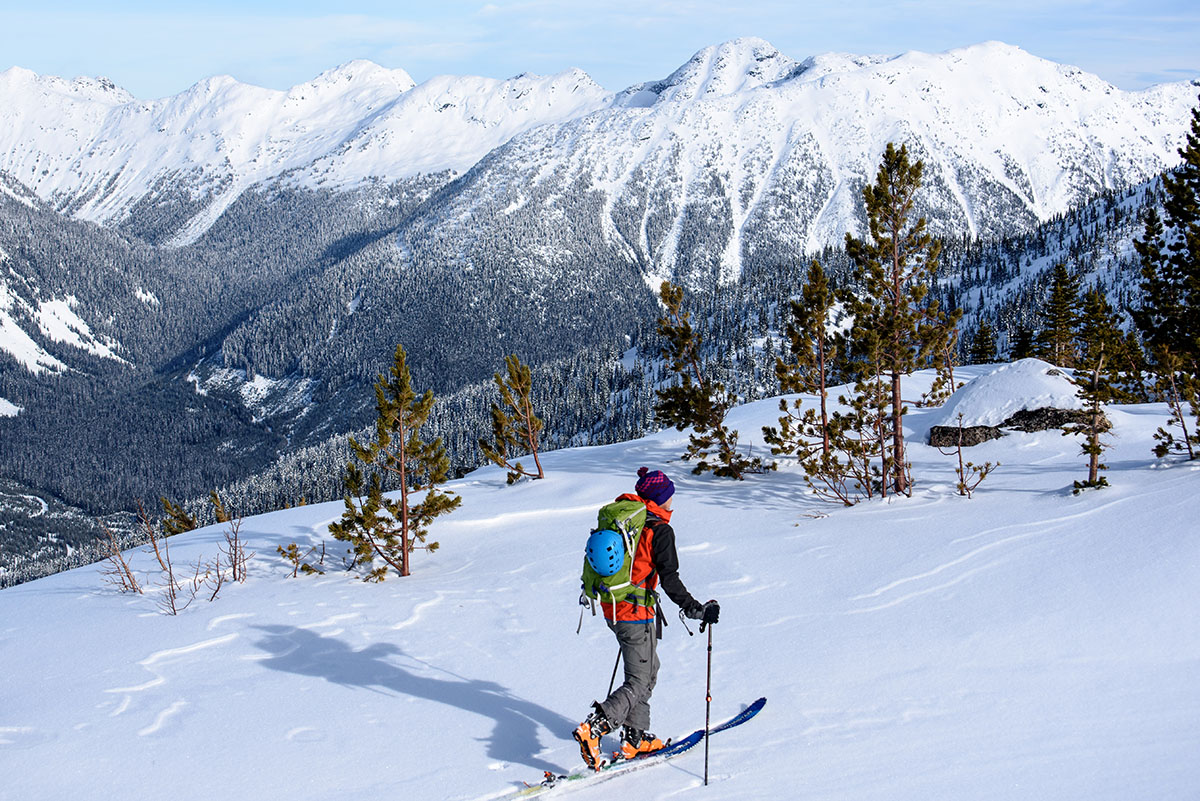
| Jacket | Price | Category | Waterproofing | Denier | Weight | Pit Zips |
|---|---|---|---|---|---|---|
| La Sportiva Storm Fighter | $379 | Minimalist/all-around | Gore-Tex Active | 20D | 11.8 oz. | No |
| Arc'teryx Alpha FL | $425 | Minimalist/all-around | Gore-Tex Pro | 40D | 11.1 oz. | No |
| Black Diamond Helio Shell | $499 | Minimalist/all-around | Gore-Tex w/C-Knit | 30D | 13 oz. | Yes |
| Outdoor Research Axiom | $399 | Minimalist/all-around | Gore-Tex Active | 30D | 14.2 oz. | No |
| Arc'teryx Beta AR | $575 | All-around | Gore-Tex Pro | 40D & 80D | 16.2 oz. | Yes |
La Sportiva’s Storm Fighter 2.0 is among the lightest alpine-ready Gore-Tex hardshells on the market. Its foul weather performance stacks up well with burlier pieces like the Outdoor Research Axiom and Arc'teryx Beta AR, but in a package that is 3 to 5 ounces lighter. There are some clear downsides to its minimalist design, which we’ve covered above, but the Storm Fighter is a great way to go fast and light.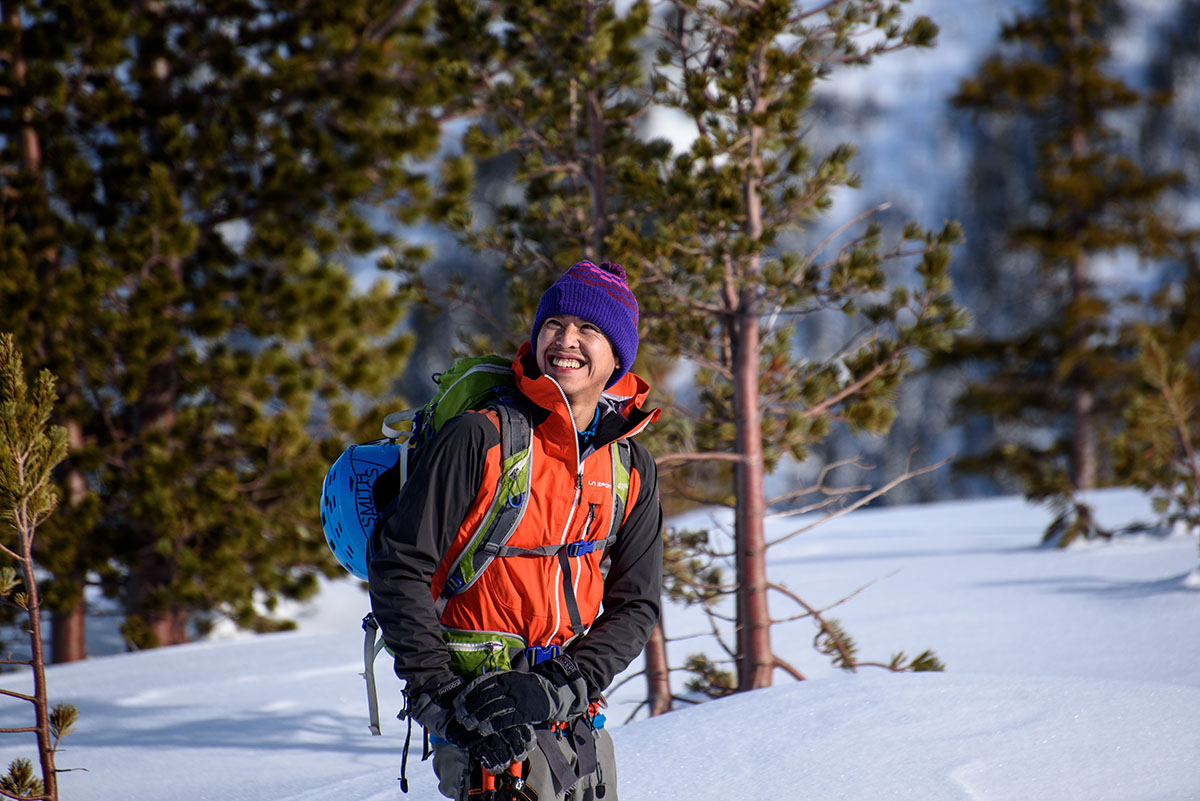
The La Sportiva isn’t the only light and packable Gore-Tex hardshell on the market, however, and two of the strongest alternatives are the Arc’teryx Alpha FL and Black Diamond Helio Shell. The updated Alpha FL jacket is a near match to the Storm Fighter in terms of weight and packability. For $425, the Alpha FL comes with a burlier Gore-Tex Pro construction for added durability, while maintaining a similar minimalist design at 11.1 ounces (315g). Both jackets lack pit zips and have only a single chest pocket along the exterior of the jacket. Where the Alpha FL gets the edge for us is the rest of its feature set: the cuffs have velcro to tighten over the wrists and the hood is much more secure in high winds with three points of adjustment (for more information, see our in-depth review). The Alpha FL does have more of a climbing focus with only a small zippered pocket on the interior (the Storm Fighter has a drop-in mesh pocket for ski gear) but we still prefer the Alpha FL in most cases.
If you’re willing to take on a little more weight and packed size, a jacket like the Black Diamond Helio Shell is an interesting option. The Helio is made with Gore-Tex C-Knit, which is even softer and quieter than the Active shell on the Storm Fighter, but slightly less breathable. The Helio also weighs more than the Storm Fighter at 13 ounces (370g), but the tradeoff is the addition of pit zips, a ski helmet compatible hood, cuff closures, and a pair of large chest pockets. The all-around nature of the Helio with only a small weight penalty is tough to beat, but the Storm Fighter 2.0 still is a high-end performance piece that undercuts the Helio’s $499 price tag by a significant $120.
If you’re thinking about buying gear that we’ve reviewed on Switchback Travel, you can help support us in the process. Just click on any of the seller links above, and if you make a purchase, we receive a small percentage of the transaction. The cost of the product is the same to you but this helps us continue to test and write about outdoor gear. Thanks and we appreciate your support!
Depending on the seller, most products ship free in the United States on orders of $50 or more. International shipping availability and rates vary by seller. The pricing information on this page is updated hourly but we are not responsible for inaccuracies.